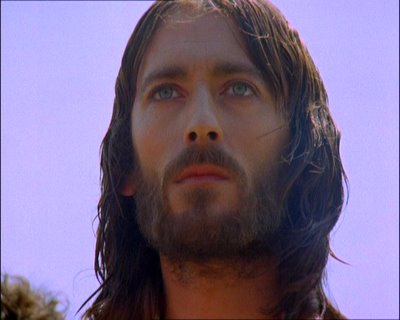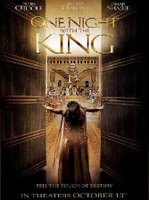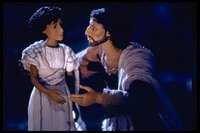Blocking and Shot Selection in Jesus of Nazareth (1977)

Last month I was discussing Franco Zeffirelli's Jesus of Nazareth (1977) and its use of touch to create an intimacy between Jesus and the various characters who encounter him, who are, generally speaking, a stand in for the audience (link here). But the filmmakers look to create this intimacy in other ways as well, most notably through their blocking (placement) of the actors and the selection of shots, and how those shots are conventionally used.
Whilst Zeffirelli is Italian, in many ways his the editing of his shots is typical of the classic Hollywood style. However, there are a few distinctive features of Jesus of Nazareth that I believe have made a significant contribution. Firstly this is a work made for television. The combination of the regular pattern of advert breaks, combined with the classic Hollywood editing is that each scene tends to land with a certain rhythm. Scenes tend to be a the same length.
Typical Hollywood editing begins with an establishing shot, but here Zeffirelli has several, practically wordless establishing shots. There might be a shot that partially shows the layout of the room, but this is intercut with some momentary details concerning a key element of the scene. When Jesus is about to heal a man born blind, we see the man being ignored on the fringes of the action in one of the se establishing shots. At Matthew's banquet we see glimpses of the prostitutes that typify the kind of company Matthew keeps (reminiscent of Fellini according to Peter Malone, ). The camera flits to another nearby location, to catch something similar several times giving the audience a feel for the wider scene.
The next key stage in these scenes is a shot that bridges these wider establishing shots, with the pattern of close-ups that is about to unfold. Sometimes it is a travelling shot, or some sort of zoom, but essentially it wraps up those disparate shots and swoops in towards a close up shot of Powell, or of the scene's main supporting character.
The main part of these scenes, however is the combination of 'two shots' which capture Jesus and the other character in the same frame with close-ups/mid-shots of Jesus and the "reverse shot" from the point of view of the other character. Sometimes the shots are point-of-view, sometimes they are over the shoulder but the effect is much the same, the two characters are staring deep into the others' eyes This pattern repeats several times: shot/reverse shot occasionally punctuated by a two-shot and eventually, towards the end of the exchange, Jesus actually touches the supporting character. Often the scene ends on one of these three shots (or a reaction shot to what we have just witnessed, as if informing the audience how they should react). At other times though it seems the character is meant to be a stand-in for the audience, placing the viewer starring into Powell's eyes in these intimate moments.
Watch the two clips in the YouTube video below and you will see what I mean. (The poster has created their own text intro, so the scene starts after 30 seconds)
If you read my last post on this subject you will also notice the moment Jesus reaches forward and touches him. Again the fact that the film was shot for television rather than for the cinema gives a greater intimacy to these shots - the emphasis is on the characters tightly composed and up close so they show-up on small 1970s TV screens.
Now this was just a convenient one I found on YouTube and not every element of the above description is in every occurrence, but of the 5-10 instances that have something like this sort of encounter, most adopt nearly all of the elements described above. But Zeffirelli is not creating his own language here, he is using long established patterns, particularly within American financed films. This established grammar is perhaps most familiar from moments of romantic attraction, or between a younger character who is being inspired by a wiser one. It's even occasionally used in situations where the feelings are as strong but negative (i.e. heat) rather than positive. These combinations of shots and placement are used time and again in American film to signify an intimacy, a special connection between the two characters.
Interestingly there are (at least) two major deviations from this formula. The first is in the encounter with the rich young man. Here most of the camera work is repeated, but his time, Jesus never reaches out and touches the man. He does not become a follower of Jesus. Even more dysfunctional is the frst scene between Jesus and Judas. Here Judas approaches Jesus, but Jesus has his eyes closed and, for almost the entire scene, is perpendicular to Judas rather than looking into his eyes. Here also the touch is emitted. And we all know how this turns out. Having identified the above pattern it seems odd watching these two scenes, as if Jesus is almost intentionally withholding. Perhaps with Judas you could argue that's fair enough: The scene plays as if Jesus is gaining special knowledge at this point of how his relationship with Judas will pan out. But the scene with the Rich Young Man seems almost unfair - if only Jesus had reached out and touched him. it feels certain that he would have followed him. Perhaps that's just me.
In any case, perhaps this goes some way to explaining why people still feel so connected with the series. These filmmaking techniques creating intimacy, but backed up by a belief system and regularly confirmed on Sunday mornings and so on, it's not entirely surprising that for some this has formed a long term connection to this film in particular.
Labels: Jesus of Nazareth





















































